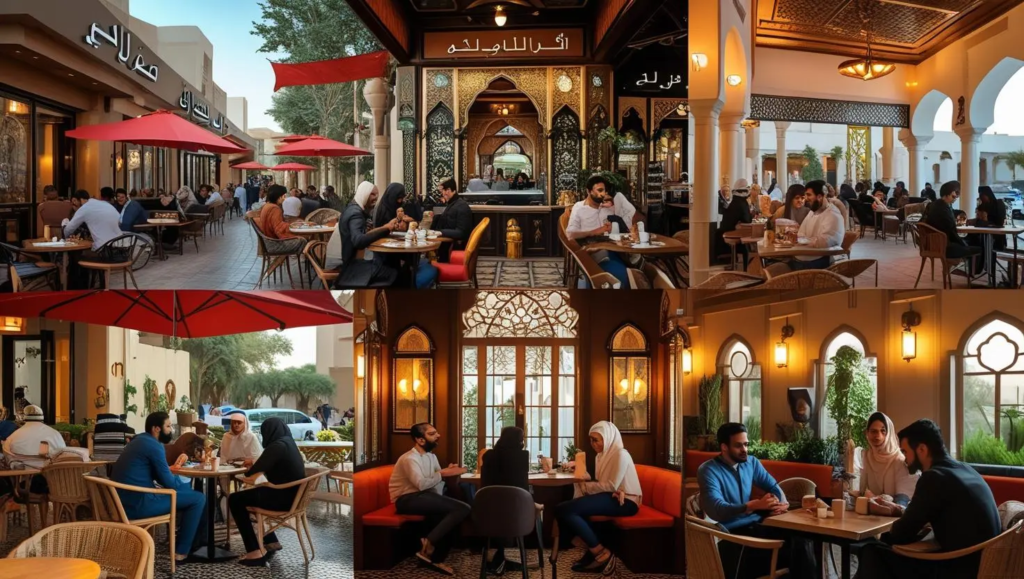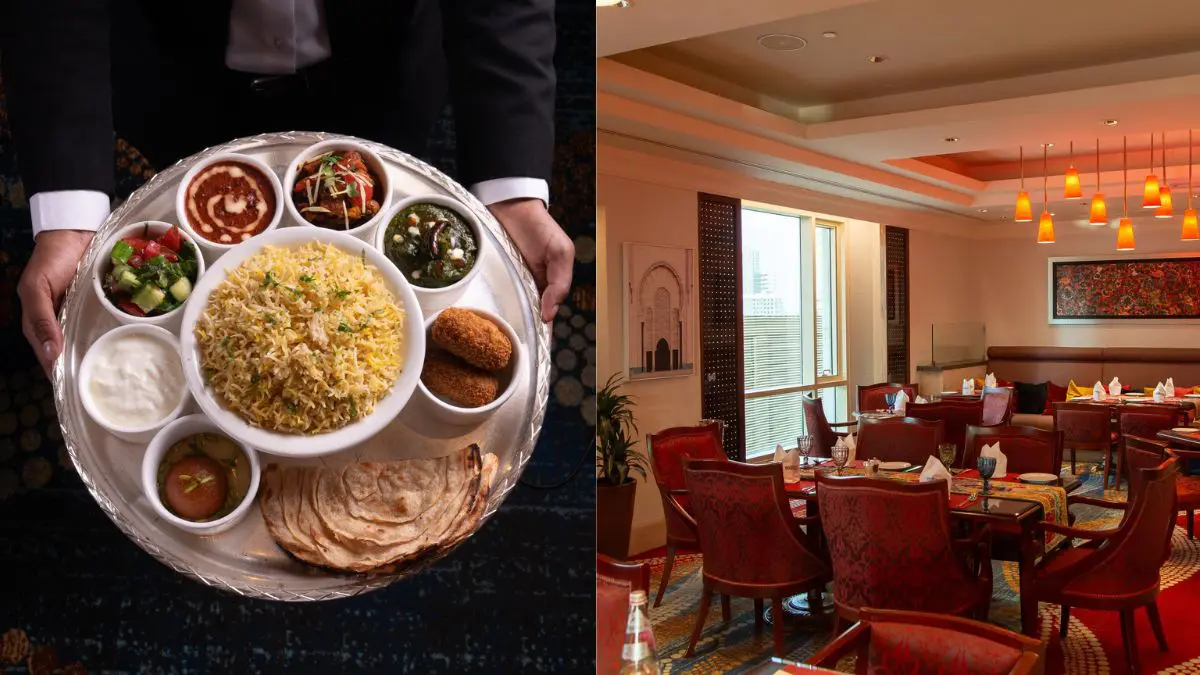Kuwait, a country deeply rooted in cultural heritage, is experiencing a culinary transformation. Its restaurants are not only preserving authentic Kuwaiti flavours but also introducing innovative techniques that appeal to modern diners. This fusion of the old and new has created an exciting food scene where traditional dishes get a contemporary twist, attracting both locals and tourists. From the use of ancient spices to the integration of modern cooking methods, Kuwaiti restaurants are redefining how the world experiences their cuisine.
The Rich Heritage of Kuwaiti Cuisine
Kuwaiti cuisine is a blend of Arabian, Persian, Indian, and Mediterranean influences. For generations, it has been known for dishes such as machboos, harees, and mutabbaq samak, which reflect the country’s history as a trading hub. The use of aromatic spices, fresh seafood, and slow-cooked meats has been central to Kuwaiti cooking traditions. These recipes have been passed down through families, keeping the essence of Kuwaiti culture alive.
Restaurants across Kuwait continue to honor these traditions by preserving original recipes and cooking methods. However, the younger generation of chefs is taking these classic flavors to new heights by experimenting with presentation and culinary techniques. This balance of respect for tradition and the drive to innovate has made Kuwaiti dining truly unique.
Modern Trends Influencing Kuwaiti Dining
In recent years, global dining trends have reached Kuwait, encouraging restaurants to innovate. Modern consumers, especially millennial and Gen Z, are looking for experiences that combine flavor with creativity. They are eager to try dishes that surprise their taste buds while still offering a connection to cultural roots. As a result, restaurants are experimenting with molecular gastronomy, fusion cuisine, and health-conscious alternatives.
For example, some Kuwaiti chefs are presenting traditional dishes like mach boos in deconstructed forms or using healthier cooking methods such as grilling instead of frying. The addition of global ingredients, like truffle oil or quinoa, into traditional recipes shows how chefs are blending international influences with Kuwaiti authenticity. These innovations make the cuisine more appealing to a wider audience without losing its original charm.

Fusion of Tradition and Modern Presentation
One of the most noticeable aspects of this culinary evolution is the way food is presented. Traditional Kuwaiti dishes, once served in simple family-style settings, are now plated with artistic precision. Restaurants use modern plating techniques, vibrant garnishes, and creative serving ware to elevate the dining experience.
For example, a classic dish like mutabbaq samak may be served on handcrafted ceramic plates with decorative sauces and micro greens, creating a visual feast. This modern approach to presentation attracts food enthusiasts and social media influences, who help spread the word about Kuwait’s evolving dining scene. The visual appeal of these dishes not only enhances the overall experience but also introduces Kuwaiti cuisine to the global culinary stage.
Innovation in Ingredients and Cooking Techniques
Beyond presentation, innovation is also seen in the choice of ingredients and cooking techniques. Kuwaiti chefs are exploring organic produce, locally sourced seafood, and premium spices to enhance the quality of their dishes. Additionally, the introduction of advanced cooking equipment, such as sous-vide machines and smokers, allows chefs to experiment with textures and flavours like never before.
Some restaurants are also reviving forgotten traditional ingredients, giving them a modern twist. For example, date syrup, an age-old Kuwaiti staple, is now being used in desserts paired with exotic flavors like matcha or saffron. This creative blend of old and new ingredients keeps the cuisine exciting while maintaining a connection to its roots.
Role of Technology in Dining Innovation
Technology is another factor shaping the way Kuwaiti restaurants innovate. Digital menus, online reservations, and interactive dining experiences are becoming increasingly common. Some upscale restaurants use augmented reality to showcase their dishes before ordering, enhancing customer engagement. Additionally, technology in the kitchen allows for precision cooking and consistency, ensuring every dish meets high standards.
The use of social media has also played a crucial role in promoting innovative dining. Restaurants actively share their creations online, attracting food lovers from around the world. This digital exposure motivates chefs to push boundaries and constantly introduce new concepts.

The Rise of Concept Restaurants in Kuwait
In recent years, Kuwait has seen a surge in concept restaurants that focus on unique dining experiences. These establishments often combine Kuwaiti heritage with contemporary themes, offering something beyond just food. For example, some restaurants recreate traditional Kuwaiti homes in their interiors while serving modernised versions of classic dishes. Others integrate live cooking stations, allowing diners to watch their meals being prepared with a mix of traditional and modern techniques.
These concept restaurants have become popular not only among locals but also among tourists seeking an authentic yet innovative culinary journey. They showcase how Kuwaiti dining has successfully merged culture, creativity, and modernity.
How Tradition Remains at the Core
Despite all these innovations, Kuwaiti restaurants remain committed to preserving their culinary heritage. The essence of traditional cooking lies in the use of time-honoured spices, slow preparation methods, and family recipes. Many chefs take pride in ensuring that even when dishes are modernised, their authentic flavours are not compromised.
Restaurants often include traditional menus alongside experimental ones, giving diners the choice to experience both. This respect for tradition ensures that Kuwait’s culinary identity remains intact while still evolving with the times.
The Impact on Kuwaiti Food Culture
The blend of tradition and innovation has significantly impacted Kuwait’s food culture. It has inspired more young chefs to enter the culinary industry, bringing fresh ideas and creativity. It has also positioned Kuwait as a destination for food tourism, attracting visitors eager to experience its unique dining scene.
Moreover, this evolution has strengthened the cultural connection among Kuwaitis, as they see their heritage celebrated in new ways. The fusion of old and new in food reflects the broader cultural shift in Kuwait, where tradition and modernity coexist harmoniously.
Future of Kuwaiti Culinary Innovation
Looking ahead, the future of Kuwaiti cuisine appears promising. Restaurants are likely to continue experimenting with flavours, techniques, and dining experiences. With the rise of sustainability, there will also be a greater focus on locally sourced ingredients and Eco-friendly practices.
Chefs will keep exploring global culinary trends while staying true to their roots, ensuring that Kuwaiti cuisine remains vibrant and relevant. This ongoing evolution will not only enhance local dining but also elevate Kuwait’s status on the international culinary map.
Conclusion
Kuwaiti restaurants are successfully blending tradition with innovation, creating a culinary landscape that is both rooted in history and open to the future. By preserving authentic flavors while embracing modern techniques, these restaurants offer an experience that resonates with all generations. Whether it’s through creative presentation, the use of new ingredients, or immersive dining concepts, Kuwait’s food scene is evolving in powerful and positive ways. This unique harmony of past and present ensures that Kuwaiti cuisine will continue to thrive, delighting taste buds and inspiring chefs for years to come.
Do follow Gulf Magazine on Instagram.
Also Read – Modern Dining Scene:Exploring the Evolution of Kuwait’s



